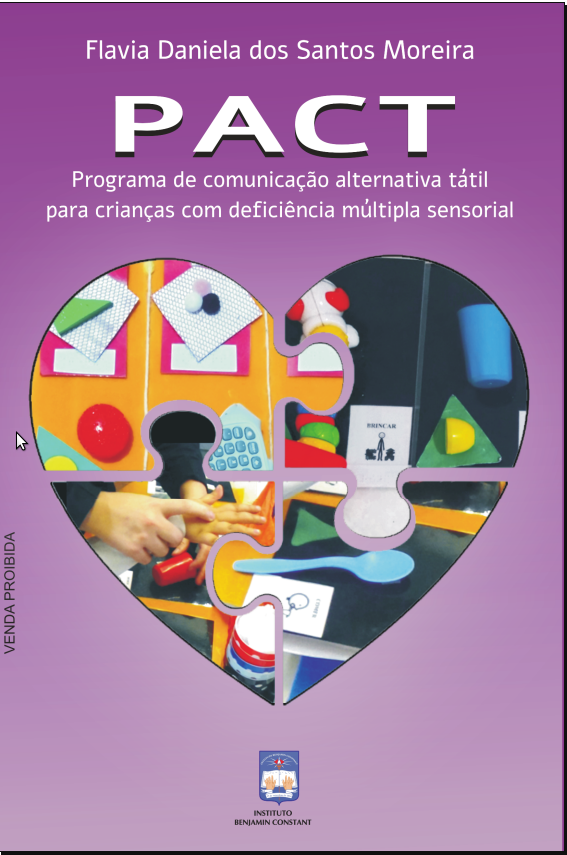Alternative Tactile Communication Program
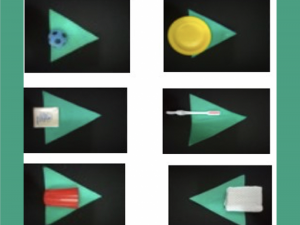
I am a teacher at the Benjamin Constant Institute (Rio de Janeiro / Brazil), a centenary school, initially intended to serve people with visual impairments. Over the years the profile of students has changed a lot and we have started to receive students with other disabilities associated with visual impairment and with communication difficulties. For this reason, I carried out my doctoral research at the State University of Rio de Janeiro and developed an alternative tactile communication program (PACT) to help my students to communicate better. I traveled to Texas and spent 3 days at Texas School for the Blind and Visually Impairment (TSBVI) learning about the use of tactile symbols.
What is the Alternative Tactile Communication Program (PACT)?
My doctoral research was a study with a quasi-experimental design intersubject with the intention of creating a program based on the association of gestures, objects and tactile symbols. Therefore, PACT is an evidence-based practice with positive results achieved by the 3 participating children.
The objectives of the study were to:
- evaluate the appropriation of the receptive vocabulary of children with multiple disabilities and visual impairment by understanding the meaning of gestures, objects and tactile symbols in specific contexts.
- analyze these children's expressive skills through the use of eating and drinking gestures and the use of objects and tactile symbols.
Who can benefit from an Alternative Tactile Communication Program?
Children with multiple disabilities and non-verbal visual impairments. PACT can take place at school and at the child's home.
Materials
- Dolls: acquire or expand your notion of "me" and "other" of the children - surveyed with the help of the teacher - the characteristics of the doll's body in your body and that of your colleague; and talked about who was present and who had missed school. Five dolls made from white cotton: three puppets, one blind, one with low vision wearing glasses and a wheelchair; and two dolls, one blind and one with low vision and glasses. It is worth mentioning that these dolls represented the visual and physical conditions of the participating children. The dolls wore lab coats with half a sleeve, made of light blue and white plaid tergal fabric. They wore shorts and lace-up shoes made of dark blue cotton fabric. They had short brown wool hair. The dolls wore a skirt and lace-up shoes made of dark blue cotton fabric. They had long brown wool hair, parted in the middle and with a braid on each side.
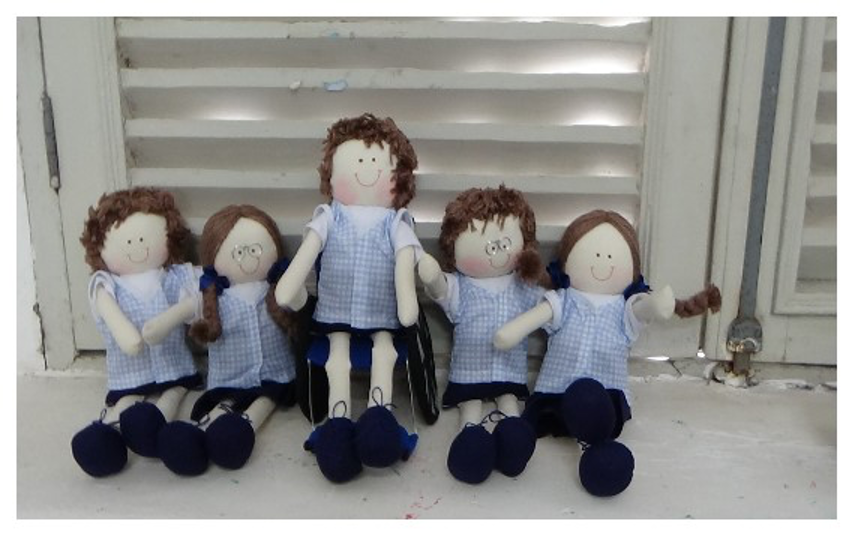
- Time Window: encourage the child to notice if the day was rainy, sunny or cloudy. The window of time was made of red card paper and, in the center, two parts of this paper were cut out in the shape of windows that opened outwards. This red card paper was covered with transparent contact and, on the back, another light blue card paper was also glued, also covered with transparent contact and with pieces of velcro where children nailed clouds made with cotton to represent the weather condition. cloudy and rainy or the sun made with Styrofoam balls painted by them with yellow gouache paint to represent the condition of the sunny weather. The symbols of time were made by the children with the help of the teacher.
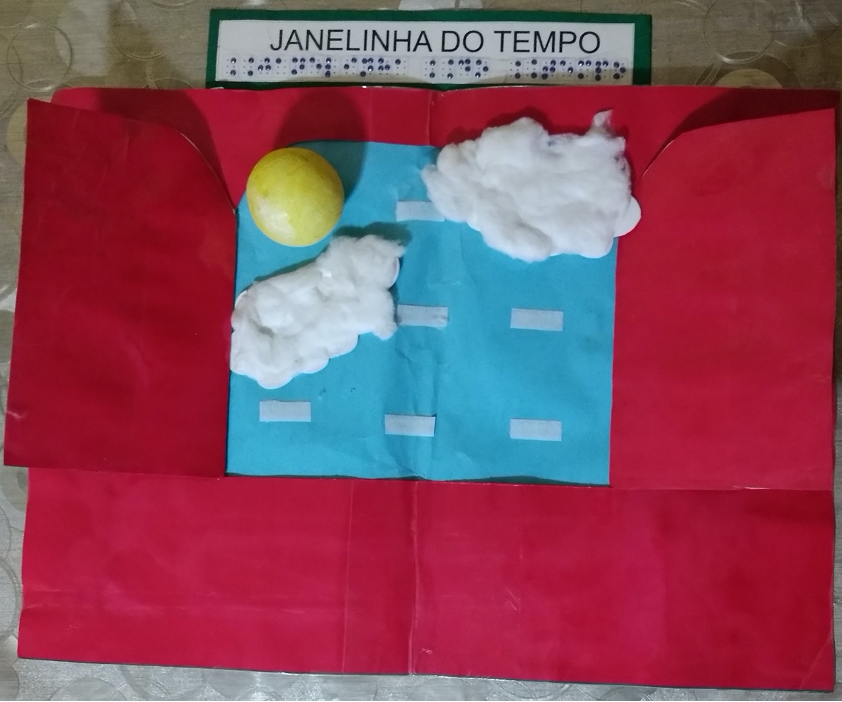
- Routine Mural: organizing and anticipating school activities to be carried out by children. The routine mural was made with colored strips of cardboard covered with transparent contact and with a piece of velcro glued in the center of each strip so that the children could nail the tactile symbols with objects related to the activities of the school routine. Each day of the week had a color: yellow for Sunday, pink for Monday, light green for Tuesday, blue for Wednesday, orange for Thursday, red for Friday and dark green for Saturday. On top of each of these strips of cardboard was a caption with the name of the day of the week written in ink and in braille. The image shows that from left to right there is the second day with the tactile symbols nailed to represent the activities to be carried out that day by the children. Next are Tuesday, Wednesday, Thursday, Friday, Saturday and Sunday without tactile symbols nailed.
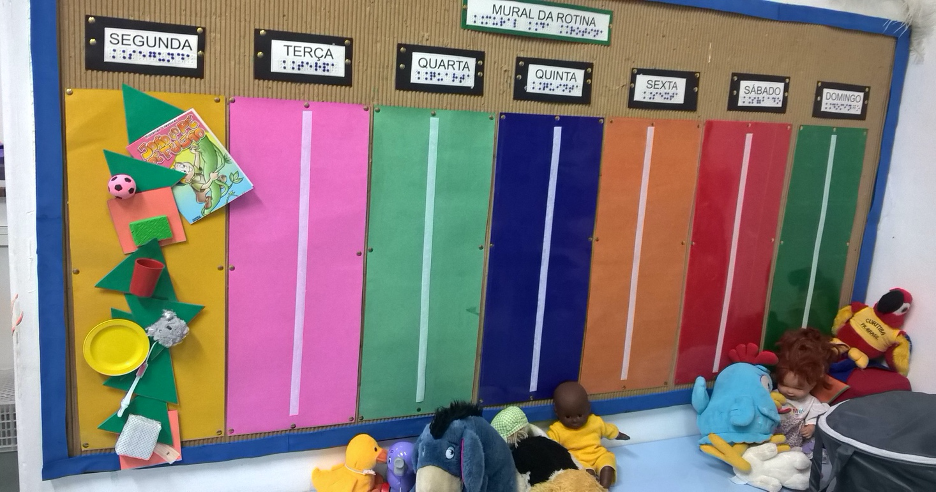
- Concrete Symbols of “yes” and “no”: helping children to express gestures to say yes and not to use their fingers, as they have not yet done so with their heads. The concrete symbols of yes and no were made with a mayonnaise lid covered with yellow biscuit dough to represent "yes" and red to represent "no". Each cap had a small plunger that could be moved according to the desired function: the plunger of the yes symbol could be moved up and down to represent the nod of an affirmative gesture; the plunger of the symbol could not be moved to the right and left sides to represent the negative head shake.
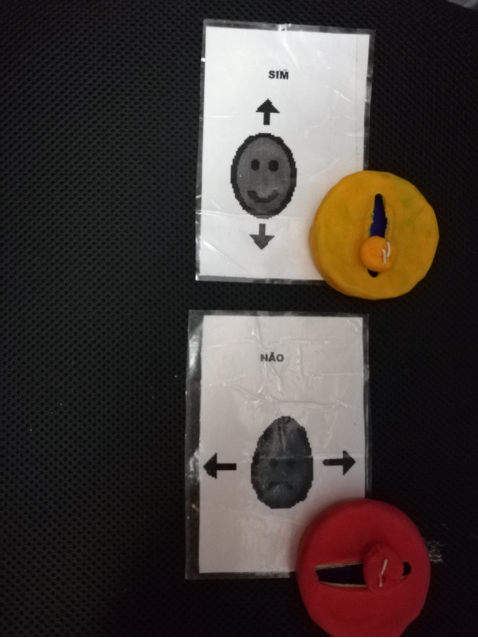
-
Repertoire of tactile symbols from Study I.
- Tactile Symbols Category: Locations
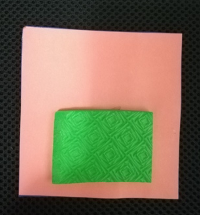
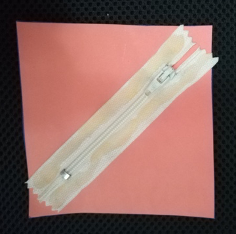
The tactile symbol of the “location” category has an orange square shape. It is made of smooth textured cardboard. The first symbol has a light green tatami mat stuck to the bottom of the figure. The second symbol has a white zipper glued diagonally to the figure.
- Tactile Symbols Category: Actions
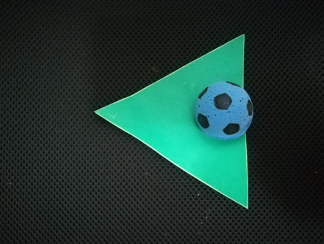
a) The tactile symbol of the “actions” category in this example is made of plain green cardboard and has a small blue foam ball with black dots to represent the physical education action.
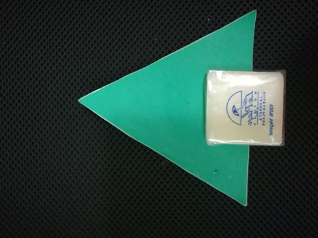
b) The tactile symbol of the “actions” category in this example is made of plain green cardboard and has a mini soap with perceptible clue to represent hand washing.
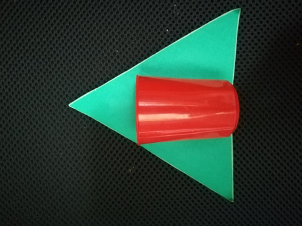
c) The tactile symbol of the “actions” category in this example is made of plain green cardboard and has a small red toy cup with perceptible clue to represent the action of drinking juice or water.
This tactile symbol was associated with the drinking gesture: closed hand with thumb touching the mouth.
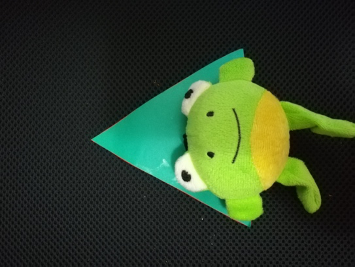
d) The tactile symbol of the “actions” category in this example is made of plain green cardboard and has a green plush frog with a perceptible clue to represent playing.
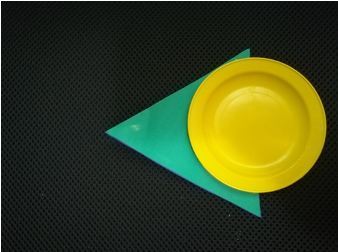
e) The tactile symbol of the “actions” category in this example is made of plain green cardboard and has a yellow plate with perceptible clue to represent eating.
This tactile symbol was associated with the gesture of eating: Open hand with fingers together and stretched across the mouth.
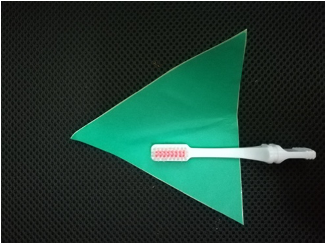
f) The tactile symbol of the “actions” category in this example is made of plain green cardboard and has a toothbrush with a perceptible clue to represent brushing teeth.
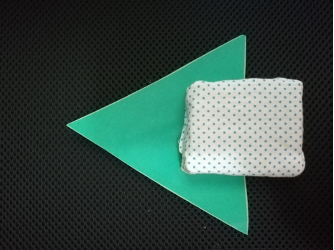 g) The tactile symbol of the “actions” category in this example is made of smooth green cardboard and has a mini cushion with a perceptible clue to represent resting or sleeping.
g) The tactile symbol of the “actions” category in this example is made of smooth green cardboard and has a mini cushion with a perceptible clue to represent resting or sleeping.
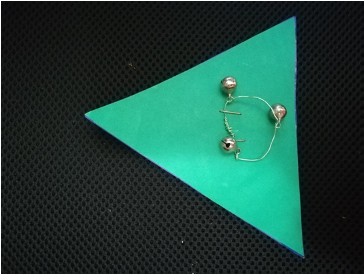 h) The tactile symbol of the “actions” category in this example is made of plain green cardboard and has a rattle with a perceptible clue to represent music lessons.
h) The tactile symbol of the “actions” category in this example is made of plain green cardboard and has a rattle with a perceptible clue to represent music lessons.
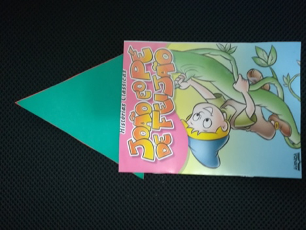 i) The tactile symbol of the “actions” category in this example is made of plain green cardboard and has a small book with a noticeable clue to represent listening to stories.
i) The tactile symbol of the “actions” category in this example is made of plain green cardboard and has a small book with a noticeable clue to represent listening to stories.
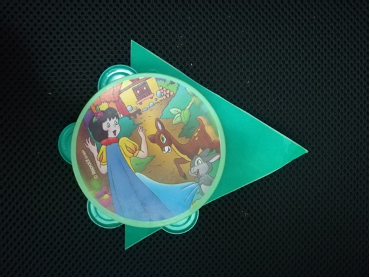 j) The tactile symbol of the “actions” category of this example is made of plain green cardboard and has a tambourine with perceptible clue to represent Capoeira.
j) The tactile symbol of the “actions” category of this example is made of plain green cardboard and has a tambourine with perceptible clue to represent Capoeira.
What are the stages of PACT?
The PACT consists of 3 stages that respect the hierarchy of symbols. The tactile symbols developed in this program were based on the tactile symbols of TSBVI. This program encourages the manifestation of communicative acts and behaviors of the actions of children who have not yet expressed themselves in a functional way through oral language.
The first step consisted of choosing the reference objects to represent the school routine shared by the three children participating in this study, who were part of a class formed by five students. These objects were chosen by the teacher and the researcher without the presence of children.
The next step was to let the children handle these objects to get to know them. Then, the objects were used to represent school activities in the following way: before performing each activity, the teacher helped the three children to research a certain object to anticipate what they would do next. For example: before going to music class, the children researched rattles. Only two objects were associated with natural gestures: a cup associated with the gesture of drinking and a plate associated with the gesture of eating. It is worth mentioning that the gesture of drinking consisted of touching the lips with the thumb and the gesture of eating consisted of touching the hand with the fingers extended over the lips.
The third stage of the PACT occurred after the children understood the meaning of the gestures associated with the objects to represent the activities. They then understood that other objects represented activities of their daily school. After this understanding, the objects were attached to the tactile symbols, which should be attached to the routine mural by the children.
What are the benefits of PACT?
Children with visual impairments and multiple disabilities are part of a broadly diverse group in terms of their characteristics and educational needs. They have visual impairment in common, so in this group they find children who are blind or have low vision.
Additional disabilities can usually include intellectual disabilities, physical disabilities, global developmental disorders, language and communication deficits, syndromes, difficulties in social interaction.
Many of these children struggle daily to communicate their interests and needs. They use elementary and idiosyncratic ways to express themselves, which are called communicative acts and communicative actions. Communicative acts include verbalizations, vocalizations, natural gestures and facial expressions and communicative actions refer to actions with the purpose of communicating something.
The repetition of these communicative acts and communicative actions in a family environment or with close adults makes these people respond according to what the child wants. But not everyone can properly interpret the communication of these children. In this sense, the stages of the PACT contribute to making this communication known to other people.
Communicating is a necessity and a right for all of us.
PACT - Tactile Alternative Communication Program offers resources that value the strengths of these children and expand their communicative modalities through tactile resources of alternative communication.
The children participating in this research were able to understand the meaning of the association of gestures with objects, when they used these resources to make requests autonomously.
One of the great difficulties of this research was the lack of continuity in the use of these resources by children. Unfortunately, the skills learned by the participating children were not used due to the lack of knowledge about tactile symbols, objects and gestures.
Here in Brazil this subject is still little known, which is why it is so important to share more information about it. I hope that this research will be replicated in other contexts and will benefit other children without functional communication.
Read an article by the same author: The Contribution of Tactile Symbols for the Communication of Children with Multiple Sensory Disability (European Journal of Special Education Research on September 18, 2018).

